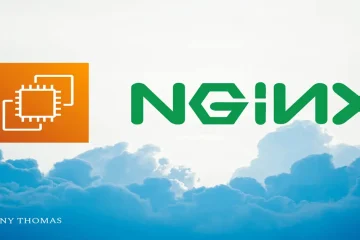Managing cloud costs is a crucial aspect of running efficient and sustainable operations on Amazon Web Services (AWS). While AWS offers scalable and flexible services, without proper cost management, you can quickly find yourself facing unexpected expenses. In this blog post, we will explore strategies and tips for optimizing your cloud spend in AWS to ensure you get the most value for your investment.
1. Monitor and Analyze Your AWS Usage
Use AWS Cost Explorer
AWS Cost Explorer is a powerful tool that allows you to visualize, understand, and manage your AWS costs and usage over time. It provides detailed reports and analytics to help you identify trends, anomalies, and potential savings.
- Track Spending: Regularly review your spending patterns and usage statistics.
- Set Budgets: Create cost budgets and set alerts to notify you when you approach or exceed your budget limits.
Enable AWS Budgets
AWS Budgets allows you to set custom cost and usage budgets. You can configure alerts to notify you via email or SNS when your usage or spending exceeds your predefined thresholds.
- Create Multiple Budgets: Set budgets for different accounts, services, or projects.
- Track Forecasts: Monitor forecasted costs and usage to anticipate future expenses.
2. Optimize Your EC2 Instances
Right-Size Your Instances
Regularly review the performance and utilization of your EC2 instances. Use AWS Compute Optimizer to get recommendations for right-sizing instances based on their usage patterns.
- Terminate Unused Instances: Identify and terminate idle or underutilized instances.
- Upgrade/Downgrade Instances: Adjust instance types to better match your workload requirements.
Use Reserved Instances and Savings Plans
Reserved Instances (RIs) and Savings Plans offer significant discounts compared to On-Demand pricing in exchange for a commitment to use specific AWS resources for a one- or three-year term.
- Evaluate Needs: Determine your long-term usage patterns and purchase RIs or Savings Plans accordingly.
- Combine with On-Demand: Use a mix of RIs, Savings Plans, and On-Demand instances to balance flexibility and cost savings.
Utilize Spot Instances
Spot Instances allow you to take advantage of unused EC2 capacity at reduced rates. They are ideal for workloads that are flexible and can tolerate interruptions.
- Batch Processing: Use Spot Instances for batch processing, data analysis, and other interruptible tasks.
- Auto Scaling: Integrate Spot Instances with Auto Scaling to dynamically adjust capacity based on demand.
3. Optimize Storage Costs
Use the Right Storage Class
AWS offers various storage classes for S3, each with different pricing and performance characteristics. Choose the appropriate storage class based on your data access patterns.
- S3 Standard: For frequently accessed data.
- S3 Standard-IA (Infrequent Access): For data that is accessed less frequently but requires rapid access.
- S3 Glacier and Glacier Deep Archive: For long-term archival and cold storage.
Implement Lifecycle Policies
Set up S3 lifecycle policies to automate the transition of objects between different storage classes or delete them after a certain period.
- Transition Policies: Automatically move data to lower-cost storage classes as it ages.
- Expiration Policies: Delete objects that are no longer needed to save on storage costs.
Use EBS Snapshots Efficiently
EBS Snapshots provide point-in-time backups of your EBS volumes. To manage costs:
- Delete Unneeded Snapshots: Regularly review and delete old or unnecessary snapshots.
- Use Snapshot Lifecycle Policies: Automate the creation, retention, and deletion of snapshots.
4. Optimize Data Transfer Costs
Leverage AWS Global Accelerator
AWS Global Accelerator optimizes the path to your applications, reducing latency and improving performance. It can also help reduce data transfer costs by routing traffic to the nearest AWS edge location.
Use Amazon CloudFront
Amazon CloudFront is a Content Delivery Network (CDN) that caches content at edge locations, reducing the need for repeated data transfers from your origin servers.
- Cache Content: Serve static and dynamic content from the edge to reduce origin server load and data transfer costs.
- Optimize Caching Policies: Configure caching policies to match your content access patterns.
Consolidate Data Transfers
Minimize inter-region data transfers by consolidating your workloads and data within the same region. Use VPC peering, AWS Transit Gateway, and other networking services to optimize data flow within your AWS environment.
5. Implement Cost Allocation and Tagging
Use Cost Allocation Tags
Cost allocation tags allow you to categorize and track AWS costs by assigning metadata to your resources. This helps in identifying and attributing costs to specific projects, teams, or departments.
- Create a Tagging Strategy: Define a consistent tagging strategy for your resources.
- Monitor Tag Compliance: Regularly audit and enforce tag compliance to ensure accurate cost allocation.
Analyze Cost and Usage Reports
AWS Cost and Usage Reports provide detailed insights into your AWS spending. Use these reports to analyze costs, identify trends, and discover opportunities for optimization.
- Custom Reports: Create custom reports to track costs by service, region, or tag.
- Regular Reviews: Conduct regular cost reviews to identify inefficiencies and areas for improvement.
Conclusion
Effective cost management in AWS requires continuous monitoring, analysis, and optimization of your cloud resources. By leveraging AWS tools like Cost Explorer and Budgets, optimizing your EC2 instances and storage, managing data transfer costs, and implementing cost allocation and tagging strategies, you can significantly reduce your cloud spend and ensure that you are getting the most value from your AWS investment.
Implementing these tips and strategies will help you maintain a cost-efficient and scalable AWS environment, allowing you to focus on your core business objectives without worrying about unexpected cloud expenses.





